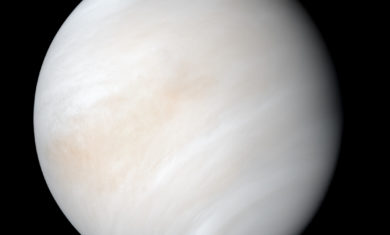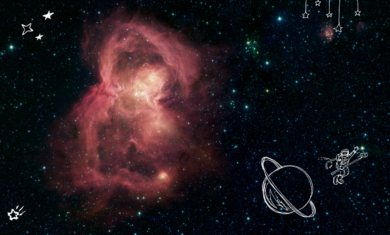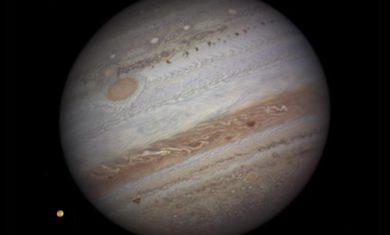Adler Skywatch: November 2023
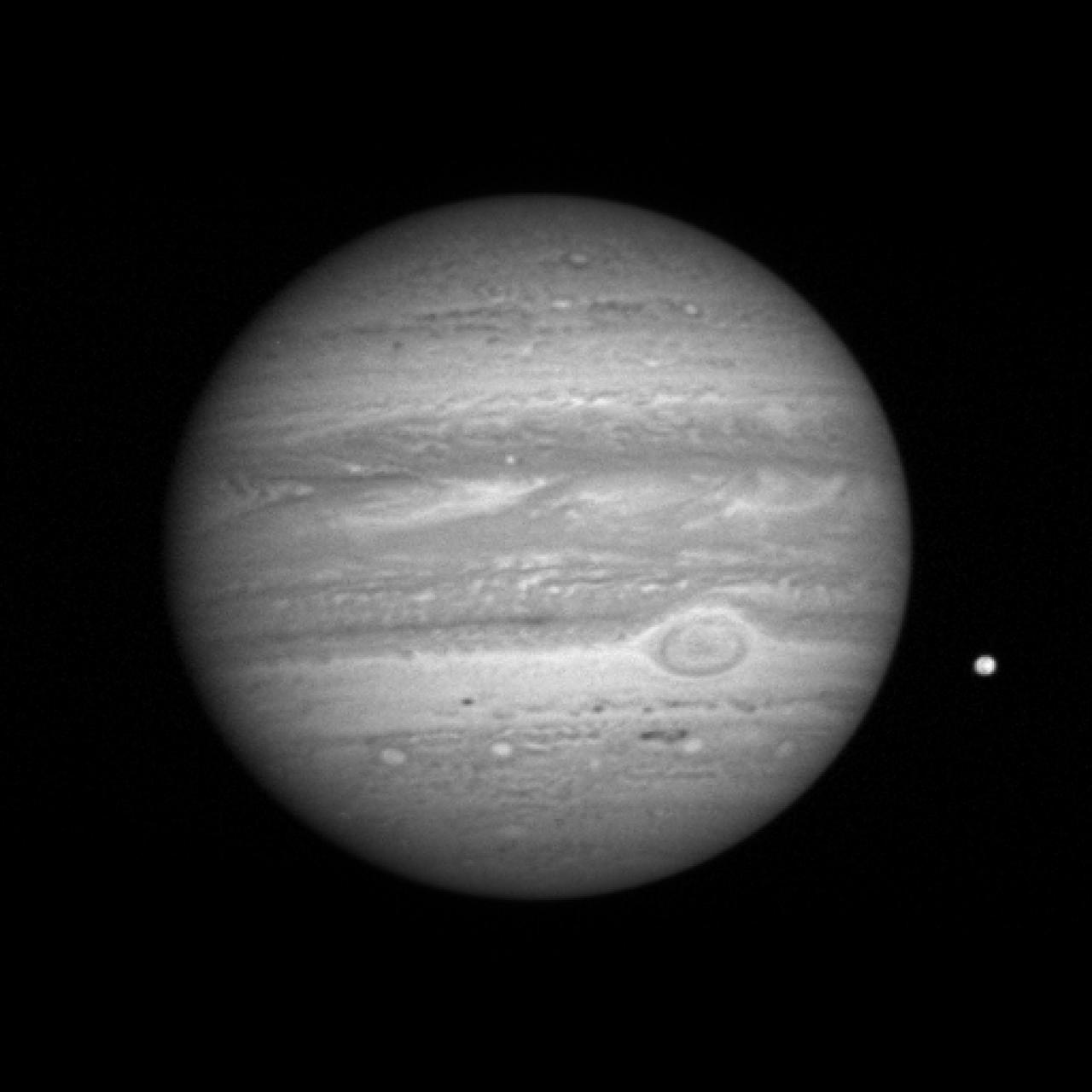
Header Image: Jupiter and its moon, Io, as seen from space. Image credit: NASA/Johns Hopkins University Applied Physics Laboratory/Southwest Research Institute
This month will be one hour longer than the previous month, thanks to the return to standard-time in November 2023. And don’t miss Jupiter, Venus, and Saturn bright in the late autumn sky!
2023 Daylight Saving Time Ends
Daylight Saving time for this year ends at 2:00 am on November 5. Those who have kept Daylight Saving time since March 12 get to move their clocks back one hour, allowing us an extra hour of sleep! The end of Daylight Saving time also means that the Sun will set earlier. In Chicago, the Sun sets around 5:30 pm on November 4. But on November 5—due to the time-change—the Sun sets around 4:30 pm.
Planet Spotting
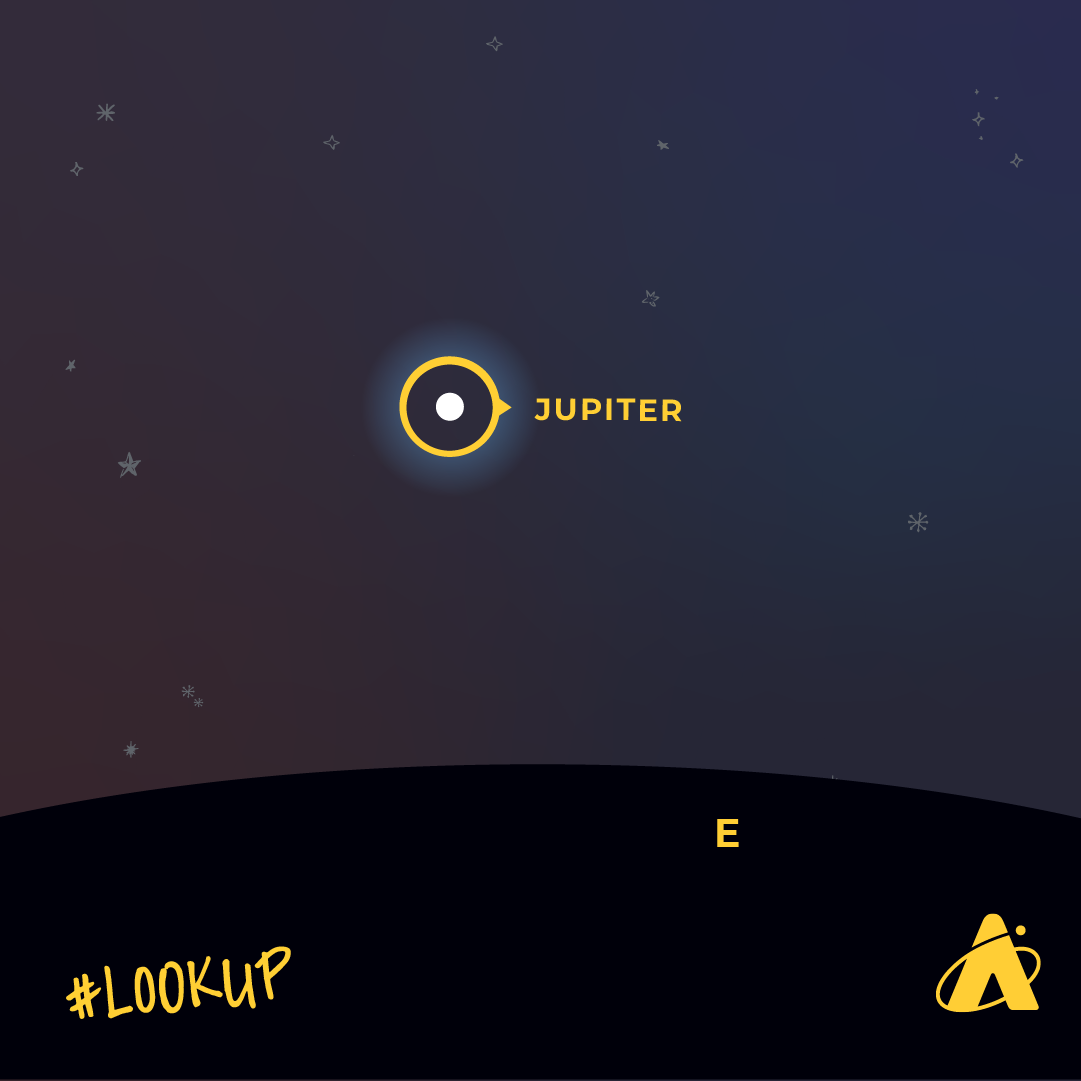
At the end of evening twilight this month, look to the eastern skies. The bright planet Jupiter is low in the east, while the slightly-less-bright, but still readily visible, Saturn is comparatively higher in the southeast. The evening of November 20, the first-quarter Moon appears below and to the left of Saturn.
On the evening of November 24, Jupiter appears below and to the left of a waxing gibbous Moon. Saturn sets in the west-southwest around 1:00 am Central Daylight time (CDT) at the start of the month, and around 10:00 pm Central Standard time (CST) at the end of the month. Jupiter sets just north of west during morning twilight at the start of the month. At the end of the month, Jupiter will set before morning twilight, around 4:00 am CST.
Venus will be the brightest planet this month. It will rise in the east during early-morning darkness, about four hours before sunrise. At dawn, Venus will be roughly 35–40 degrees high in the southeast sky.
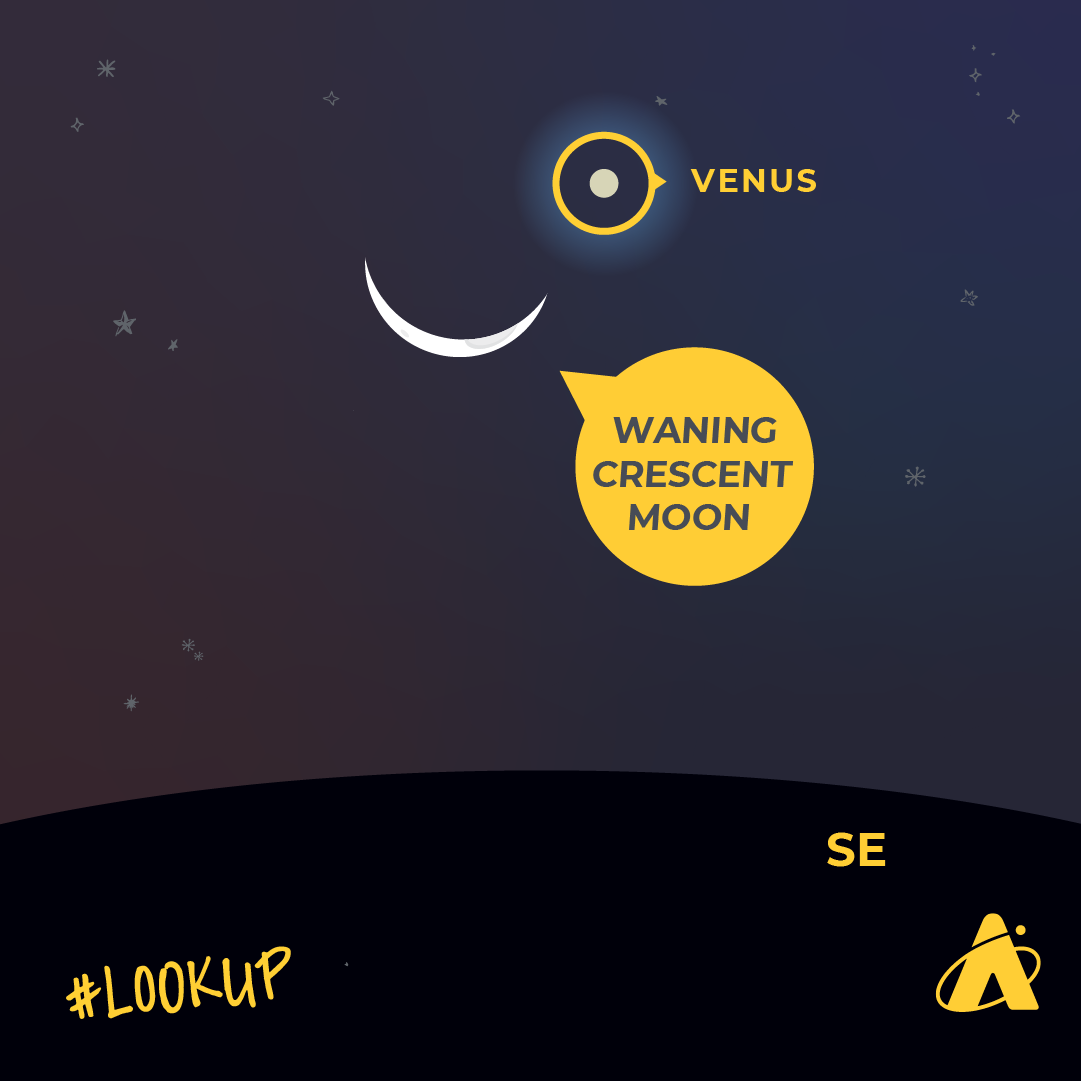
If you get up before or during morning twilight on November 9, look low in the east-southeast skies to see a conjunction of Venus and the waning crescent Moon. A conjunction occurs when the two celestial objects appear very close to each other in the sky. Even after sunrise, if you can spot the waning crescent Moon, you may also be able to see Venus to the Moon’s upper-right on this date.
As was the case last month, the planets Mars and Mercury appear too close to the Sun to be visible.
Upcoming Meteor Showers

There are a few minor annual meteor showers this month, including the Leonids meteor shower, which historically peaks before morning twilight on November 16–18. Usually, the Leonids produce ten meteors per hour under very dark, clear skies.
Roughly every 33 years, the Leonids have been known to turn into a meteor storm, with thousands of meteors per hour, as the Earth passes through denser clumps of solar-orbiting comet debris. The last notable Leonid meteor storm was in 2002. Unfortunately, astronomers are currently predicting that the Earth will not encounter one of these clumps of material around 2033. In fact, we may not see a Leonid meteor storm until around 2099.
But you don’t have long to wait for the next big meteor shower! Next month is the Geminids meteor shower, which this year peaks around the new Moon—allowing for darker skies and better chances to see more meteors.
Moon Phases
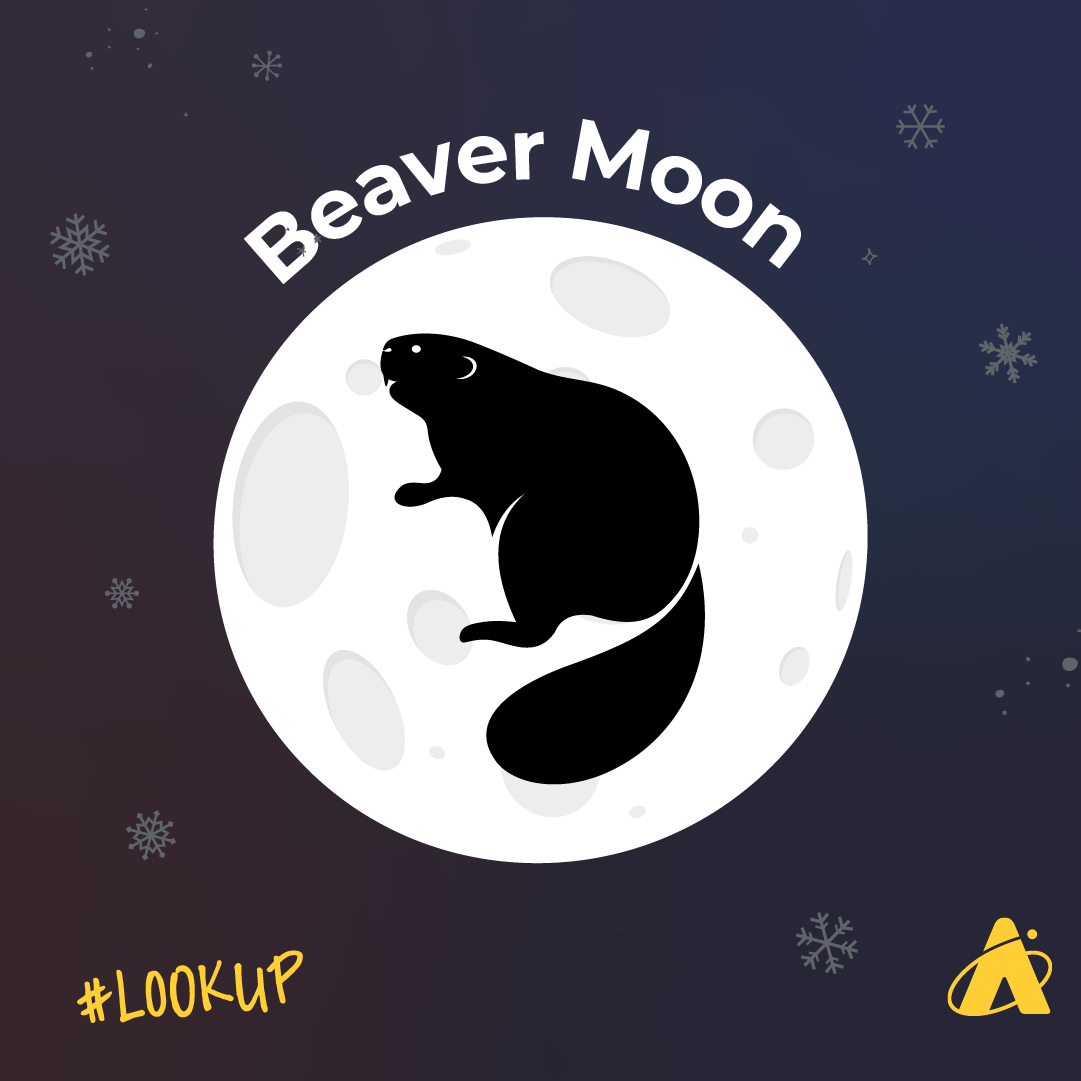
Last Quarter Moon: November 5
New Moon: November 13
First Quarter Moon: November 20
Full Moon: November 27
Please note: these descriptions are for the Chicago area, using Central time.
Subscribe To Skywatch Wednesday This November
Tour the sky with the Adler Planetarium’s Theaters Manager, Nick, in Skywatch Wednesday. Nick uses cutting edge visualizations, NASA images, and astrophotography to show you what you can see in the night sky throughout the year.
Check out our latest episode for your 2023 guide to stargazing this autumn!
Learn From Our Astronomy Educators
Watch exclusive live episodes of Sky Observers Hangout this November! Learn how to observe upcoming cosmic happenings, enhance your astrophotography skills, and see celestial objects through a telescope virtually with our astronomy educators.
In our latest episode, Michelle and Hunter guide you through the annular solar eclipse on October 14, 2023!




